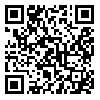Volume 16, Issue 2 (1-2017)
ijdld 2017, 16(2): 103-110 |
Back to browse issues page
Download citation:
BibTeX | RIS | EndNote | Medlars | ProCite | Reference Manager | RefWorks
Send citation to:



BibTeX | RIS | EndNote | Medlars | ProCite | Reference Manager | RefWorks
Send citation to:
Narmaki E, Shirasb F, Qorbani M, Sotoudeh G. ASSOCIATION BETWEEN FOOD SECURITY AND ANTHROPOMETRIC MEASUREMENTS, BODY COMPOSITION, BLOOD PRESSURE IN WOMEN ATTENDING MUNICIPALITY SPORTS CLUBS IN WEST OF TEHRAN. ijdld 2017; 16 (2) :103-110
URL: http://ijdld.tums.ac.ir/article-1-5502-en.html
URL: http://ijdld.tums.ac.ir/article-1-5502-en.html
1- 1. Department of Community Nutrition, Schoole of Nutritional Sciences and Dietetics, Tehran University of Medical Sciences, Tehran, Iran
2- 2. Non-Communicable Diseases Research Center, Alborz University of Medical Sciences, Karaj, Iran
3- 1. Department of Community Nutrition, Schoole of Nutritional Sciences and Dietetics, Tehran University of Medical Sciences, Tehran, Iran ,gsotodeh@tums.ac.ir
2- 2. Non-Communicable Diseases Research Center, Alborz University of Medical Sciences, Karaj, Iran
3- 1. Department of Community Nutrition, Schoole of Nutritional Sciences and Dietetics, Tehran University of Medical Sciences, Tehran, Iran ,
Abstract: (4381 Views)
Background: Household food insecurity is defined as limited or uncertain access to nutritionally adequate and safe food or limited ability to obtain foods in socially acceptable ways. The association between food security and obesity had been investigated before but so far, its association with body composition has not been investigated. Therefore, the aim of this study was to investigate the relationship between Food security with anthropometric measurements, body composition and blood pressure in women attending the sport clubs of municipality in west of Tehran.
Methods: This cross-sectional survey was conducted in 397 randomly selected healthy women from 14 sport clubs dependent to mayoralty in North West, South West and West of Tehran. To determine the food security, USDA food insecurity (18-item scale) was used. Weight, height, waist circumference (WC), systolic and diastolic blood pressure (SBP, DBP) were measured according to standard protocols Body composition was measured using body impedance analyzer (BIA). Socio-demographic and socioeconomic status were recorded. Data analysis included chi-square test, ANOVA test and multivariate analyses of variance.
Results: The prevalence of food insecurity in subjects was 54.4% that 45.3% were food insecure without hunger, and 9.1% were food insecure with moderate and severe hunger. Compared to food secure households, people with food insecurity significantly had more general obesity (Body Mass Index > 30kg/m2) and central obesity (Waist > 80 cm) (P-value < 0.0001).Also, most people with high blood pressure were in food insecure group and the association between blood pressure and food security was significant (P-value < 0.0001). Body composition and systolic and diastolic blood pressure of women were significantly greater in the group with food insecurity than food security group (P-value < 0.0001).
Conclusion: The results of this study showed that food insecurity was significantly associated with obesity, fat mass, visceral fat mass and blood pressure.
Methods: This cross-sectional survey was conducted in 397 randomly selected healthy women from 14 sport clubs dependent to mayoralty in North West, South West and West of Tehran. To determine the food security, USDA food insecurity (18-item scale) was used. Weight, height, waist circumference (WC), systolic and diastolic blood pressure (SBP, DBP) were measured according to standard protocols Body composition was measured using body impedance analyzer (BIA). Socio-demographic and socioeconomic status were recorded. Data analysis included chi-square test, ANOVA test and multivariate analyses of variance.
Results: The prevalence of food insecurity in subjects was 54.4% that 45.3% were food insecure without hunger, and 9.1% were food insecure with moderate and severe hunger. Compared to food secure households, people with food insecurity significantly had more general obesity (Body Mass Index > 30kg/m2) and central obesity (Waist > 80 cm) (P-value < 0.0001).Also, most people with high blood pressure were in food insecure group and the association between blood pressure and food security was significant (P-value < 0.0001). Body composition and systolic and diastolic blood pressure of women were significantly greater in the group with food insecurity than food security group (P-value < 0.0001).
Conclusion: The results of this study showed that food insecurity was significantly associated with obesity, fat mass, visceral fat mass and blood pressure.
Type of Study: Research |
Subject:
Special
Received: 2016/04/11 | Accepted: 2016/09/25 | Published: 2017/09/26
Received: 2016/04/11 | Accepted: 2016/09/25 | Published: 2017/09/26
Send email to the article author
| Rights and permissions | |
 |
This work is licensed under a Creative Commons Attribution-NonCommercial 4.0 International License. |





